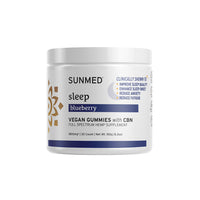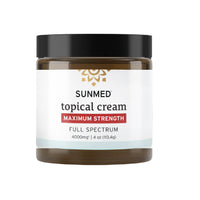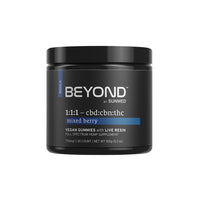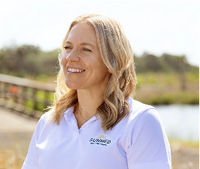Sun Spots on Skin: Causes and Prevention
Learn more about sun spots, their causes, and some tips to protect your skin and reduce the risk of sun spots with Sunmed.

Noticing dark or brown spots on your skin can bring up a lot of questions. Are they serious? What caused them? Is there anything you can do to prevent more from showing up?
The good news is, most of the time, these marks (often called sun spots) are harmless. They’re common, especially as we get older, and they tend to show up on areas of the body that see the most sunlight. While they’re usually not a medical concern, many people want to understand what’s behind them and what can help prevent them from developing in the first place.
Let’s take a closer look at why these spots form and what you can do to protect your skin long-term.
What are sun spots on skin?
Sun spots, sometimes called age spots, liver spots, or solar lentigines, are flat, darkened patches that develop on the skin over time — especially on sun-damaged skin. They can range in color from light brown to dark brown, and they tend to appear on areas that are frequently exposed to the sun. You might notice them on sun-exposed areas like your face, shoulders, chest, hands, arms, or back.
While the names may sound concerning, these spots are typically not harmful. The appearance of sun spots is more considered a cosmetic concern than a health issue.
However, because they share some similarities in appearance with more serious skin conditions, it’s always worth keeping an eye on them and checking in with a healthcare professional if anything looks unusual or changes over time.
What can cause sun spots?
The primary cause of sun spots is exposure to ultraviolet (UV) light — both from the sun and from artificial sources like tanning beds. When your skin is exposed to UV light, it triggers the production of melanin, the pigment that gives your skin its color. This is part of your body’s natural defense against UV damage.
However, repeated, unprotected exposure can lead to uneven melanin production, which causes these darkened spots to form.
Some factors can increase your likelihood of developing sun spots and skin discoloration, including:
- Spending a lot of time outdoors without sunscreen or protective clothing
- Using tanning beds or other artificial UV sources
- Getting older, as skin naturally becomes more susceptible to sun damage over time
- Having a lighter skin tone, which may be more prone to showing visible sun damage
Even if you don’t spend hours tanning on the beach, everyday exposure — like walking your dog, gardening, or driving with your arm by the window — can add up. UV rays are strongest between 10 a.m. and 4 p.m., but they’re present all day, even on cloudy days.
Are sun spots harmful?
Most sun spots are completely harmless and don’t require medical treatment. They’re usually flat, painless, and don’t change much in size or shape over time. That said, it’s smart to keep track of any new or changing spots on your skin because they can sometimes look similar to more serious skin conditions, like melanoma.
It’s a good idea to seek medical advice if you notice any skin lesions or spots that are:
- Irregularly shaped
- Multiple shades of brown, black, red, or other colors
- Growing, changing, or raised
- Itchy, bleeding, or painful
These can be a sign of abnormal skin cells and certain types of skin cancer. Regular skin checks from a healthcare provider can help you stay on top of any concerns.
How to prevent sun spots
While you can’t undo past sun exposure, you can take steps to help protect your skin in the future. Making small changes to your daily routine can go a long way toward preventing new sun spots from forming.
1. Daily sun protection
One of the most effective ways to prevent sun spots is by using broad-spectrum sunscreen every day. Look for an SPF of 30 or higher and apply it to all exposed skin, even on cloudy days or when you’re staying indoors near windows. UV rays can pass through glass, so it’s a good idea to make sunscreen a part of your morning routine, just like brushing your teeth.
Reapplying sunscreen every two hours is important, especially if you’re swimming or sweating. Protective clothing, wide-brimmed hats, and UV-blocking sunglasses can add another layer of defense.
2. Avoid peak sun hours
The sun’s UV rays are strongest between 10 a.m. and 4 p.m.
If you can, try to plan outdoor activities earlier in the morning or later in the afternoon. If you need to be outside during peak hours, seek out shaded areas when possible.
3. Skip the tanning beds
Tanning beds use artificial UV light, which carries the same risks as sun exposure — sometimes even more so. While a tan might seem like a quick way to even out your skin tone, it actually increases your chances of developing sun spots and other types of skin damage over time.
4. Support your skin with a consistent routine
Taking care of your skin daily can help keep it looking its best. Gentle exfoliation can help remove dead skin cells, while moisturizers support your skin’s barrier. Products containing vitamin C or niacinamide are often used to support a more even-looking skin tone and promote brightness.*
5. Consider red light therapy
Red light therapy is another tool that some people turn to for skin wellness. It works by using low-wavelength red light to stimulate your skin cells. Research suggests that this type of light may help support natural skin renewal processes and improve overall skin appearance over time.*
You can find red light therapy in professional spa settings, dermatology offices, or through at-home devices designed for personal use. While results vary by individual, many people incorporate this therapy into their regular skin care routines to promote skin health.
What can you do about existing sun spots?
While prevention is key, it’s understandable to want to address the spots that have already formed. The good news is, you have several options to consider depending on your personal preferences, budget, and comfort level.
1. Professional treatments
If you’re looking for quicker or more dramatic results, visiting a licensed dermatologist or skin care professional is a great place to start. They can evaluate your skin and recommend treatments based on your goals.
Some of the most common professional treatments include:
- Chemical Peels: These treatments use chemical solutions to exfoliate the top layers of skin. As your skin heals, it may appear brighter and more even-looking over time.
- Laser Therapy: Laser treatments can target excess pigment in the skin to help break it down. This option typically requires multiple sessions, but many people notice visible improvement after completing treatment.
- Cryotherapy: This method uses liquid nitrogen to freeze and remove the outer layer of skin where the sun spot is located. It’s often used for single spots rather than larger areas.
- Microdermabrasion: This is a mechanical exfoliation treatment that helps remove dead skin cells and may improve the appearance of sun damage with repeated sessions.
Each of these treatments comes with its own risks, costs, and recovery times, so it’s important to talk with a qualified professional to figure out what’s right for you.
2. Over-the-counter skin brightening products
If professional treatments aren’t the right fit for you, there are plenty of skincare products on the market designed to help improve the appearance of uneven skin tone over time.
Ingredients like vitamin C, retinoids, and niacinamide are commonly used in brightening serums, creams, and treatments. These products may help support a more even-looking complexion with consistent, long-term use.*
It’s important to have realistic expectations. These products typically take several weeks or even months of regular use to show noticeable results. Patience and consistency are key.
3. At-home red light therapy devices
As mentioned earlier, red light therapy is gaining popularity for at-home skin care routines. Devices designed for home use typically use low-wavelength red light to help support skin wellness without causing damage or irritation.
While research is still emerging, many people find that regularly using these tools helps support their skin’s natural renewal process and improve its overall appearance.
If you’re considering adding red light therapy to your wellness routine, make sure to follow the manufacturer’s instructions for safe and effective use.
Other helpful lifestyle tips for skin wellness
While sun protection and proper skin care are essential, your overall lifestyle also plays a big role in supporting skin health.
Here are a few additional wellness tips to consider:
- Eat antioxidant-rich foods like berries, leafy greens, and nuts, which may help protect your skin from oxidative stress.
- Stay hydrated by drinking enough water throughout the day to help maintain skin moisture.
- Avoid smoking, which can contribute to premature skin aging and dullness.
- Find tools to help you manage stress, as high stress levels can sometimes affect your skin’s appearance.
Taking care of your skin is a whole-body effort, and small daily choices can make a noticeable difference over time.
The bottom line
At Sunmed, we believe that skin wellness starts with understanding how to care for your body in a way that feels natural and sustainable.
Whether you’re looking to protect your skin from future sun spots or seeking ways to support your skin’s natural appearance, we’re here to help you navigate your wellness journey with confidence.
We’re proud to offer high-quality, third-party tested wellness products designed to complement your daily routine. Every product we create is rooted in clean ingredients and backed by science. We’re committed to helping you feel your best, naturally.
*This statement has not been evaluated by the Food & Drug Administration. This product is not intended to diagnose, treat, cure, or prevent any disease.
Sources:
Hyperpigmentation: What it is, Causes, & Treatment | Cleveland Clinic













